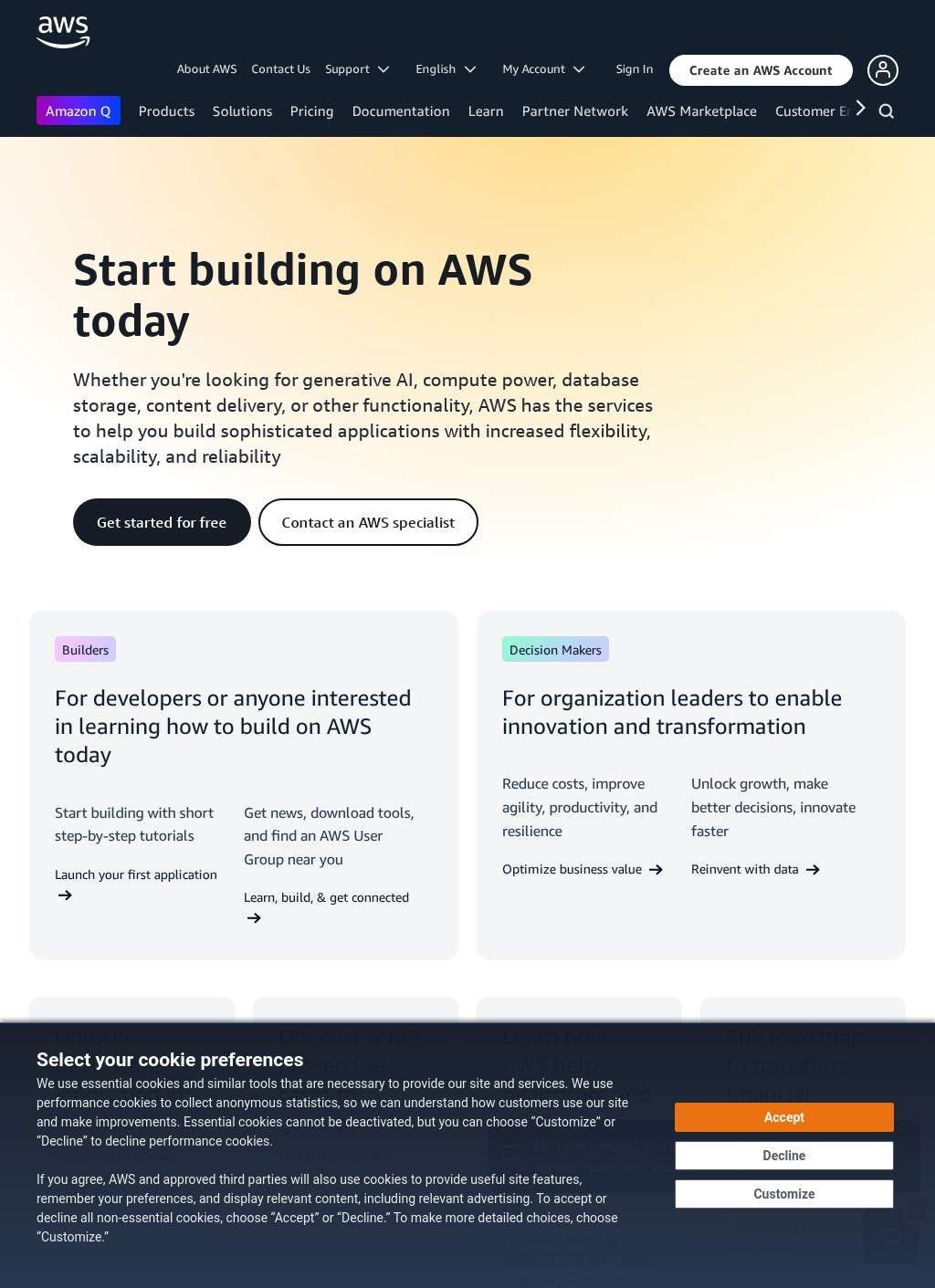Amazon Web Services operates as the world's most comprehensive and widely adopted cloud computing platform, fundamentally transforming how organizations approach IT infrastructure and application development. Born from Amazon's own need to solve complex internal infrastructure challenges in the early 2000s, AWS has evolved into a platform serving millions of customers ranging from innovative startups to Fortune 500 enterprises and government agencies worldwide. The platform addresses the traditional pain points of IT infrastructure management by providing on-demand access to computing resources without the need for large upfront investments in physical hardware, data centers, or specialized technical teams.
The service portfolio spans an impressive breadth of offerings that cover virtually every aspect of modern computing needs. Core infrastructure services include Amazon EC2 for scalable virtual computing, Amazon S3 for object storage, and Amazon RDS for managed databases. Beyond these fundamentals, AWS provides advanced services in artificial intelligence and machine learning through Amazon SageMaker, serverless computing via AWS Lambda, container orchestration with Amazon EKS, and comprehensive analytics through Amazon Redshift. Each service is designed to work seamlessly with others, creating an ecosystem where developers can build sophisticated applications by combining different AWS components rather than building everything from scratch.
What distinguishes AWS from traditional IT solutions and even other cloud providers is its relentless focus on operational excellence and customer obsession. The platform has been architected to meet the security requirements of the most demanding organizations, including military agencies, global banks, and healthcare institutions. This security-first approach includes over 300 security, compliance, and governance services, support for 143 security standards and compliance certifications, and encryption capabilities for all services that store customer data. The platform's reliability stems from its global infrastructure spanning 114 Availability Zones across 36 geographic regions, with planned expansion to additional regions worldwide.
The platform serves diverse customer segments through flexible pricing models and service tiers that accommodate different needs and budgets. Individual developers and startups can leverage the AWS Free Tier to experiment and build applications without initial costs, while enterprises benefit from volume discounts, reserved instance pricing, and dedicated support teams. The pay-as-you-go model means organizations only pay for the resources they actually consume, eliminating the traditional challenge of overprovisioning infrastructure. This pricing flexibility has democratized access to enterprise-grade technology, enabling college students to access the same powerful computing resources used by major corporations.
Innovation remains at the core of AWS's value proposition, with the company continually pioneering new approaches to cloud computing. AWS introduced serverless computing to the mainstream with AWS Lambda in 2014, fundamentally changing how developers think about application architecture. The platform continues to push boundaries in areas like quantum computing through Amazon Braket, edge computing with AWS Wavelength, and artificial intelligence through custom silicon like AWS Inferentia chips. This culture of innovation ensures that AWS customers have early access to emerging technologies that can provide competitive advantages in their respective markets.
The extensive partner ecosystem amplifies AWS's capabilities through the AWS Partner Network, which includes thousands of systems integrators specializing in AWS services and tens of thousands of independent software vendors who have adapted their technologies to work optimally on the platform. This ecosystem means customers can access not just AWS's native services but also best-of-breed third-party solutions that have been validated and optimized for the AWS environment. The combination of AWS services and partner solutions creates almost unlimited possibilities for application architecture and business solutions.
Developer experience receives significant attention through comprehensive tools, documentation, and educational resources. AWS provides multiple interfaces for service interaction, including a web-based management console, command-line tools, and SDKs for popular programming languages. The AWS Well-Architected Framework offers best practices for building reliable, secure, efficient, and cost-effective systems on the platform. Extensive documentation, tutorials, and training programs help developers at all skill levels become productive quickly, while AWS certification programs provide formal recognition of cloud expertise.
Support and professional services ensure that organizations can successfully adopt and optimize their use of AWS technologies. The platform offers multiple support tiers, from basic documentation and community forums to enterprise-level support with dedicated technical account managers and 15-minute response times for critical issues. AWS Professional Services and certified partners provide consulting, implementation assistance, and ongoing optimization services. Additionally, AWS regularly publishes case studies, reference architectures, and best practices that help organizations learn from successful implementations across various industries and use cases, ensuring that the collective knowledge of the AWS community benefits all users.
